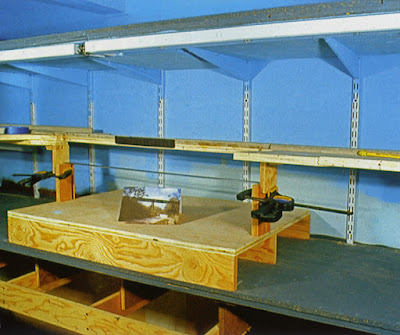This series of posts about minor scenery refinements on my layout is not intended to present profound insights into scenery development, only to illustrate that even a largely complete layout like mine can benefit from some refinement and upgrading of scenery.
The present post is a follow-on to my post about creating some ground texture in an area alongside the modest-size industry, Pismo Marine Services, in my layout town of Santa Rosalia (read that post at: https://modelingthesp.blogspot.com/2025/01/refining-scenery-part-4.html ).
At the end of that prior post, I mentioned that I had chosen the Tichy handcar shed for a storage shed structure to be placed in the area I had worked on. Like most Tichy products, this shed goes together very nicely and is easy to build. The first step is to glue walls together and add the floor. (The building’s footprint in HO scale is 12 x 20 feet.)
Following this step, the doors were added. I decided to paint the roof of the structure a different color at this stage, when it is easy to do so. I chose dark green, a common enough color for rolled roofing as is depicted on this kit.
And after considering several shades of gray and tan for the structure’s walls, I decided to keep the molded color of the walls, and thus simply sprayed the body with clear flat, so it could be weathered. I will paint the underfloor support posts a darker gray after weathering .
My next step was weathering. I used my usual technique, washes made with acrylic tube paint, as described in the “Reference pages” linked at the top right corner of this post. The intent was to show a moderate amount of dirt, consistent with a fairly long time in service. On the roof, I added some Pan Pastel gray to soften the dark green.
You can see above that the doors are a little elevated, to accommodate tracks for a speeder. But this isn’t going to be that kind of shed, so I needed to add a little platform, making shed entry convenient. I just used some scrap Evergreen scribed styrene sheet with about 10-scale-inch board width, and assembled it with styrene cement, using scale 8 x 8-inch strip for inside corner reinforcement. I then dirtied it with Pan Pastels. I also added the name of the adjoining business on the doors.
Next the ground texture and some grass and small vegetation needed to be added to complete the scene. That is why, in the previous post’s last photo (see link in top paragraph, above), the center of the area between the two dirt piles was unfinished. Now it looks like this.
Although really quite a small project, this does complete an essentially empty layout area that had been unscenicked except for painting the Homasote. The area has now been put to some use, instead of being merely a blank spot. I suspect there are lots of layouts with occasional small areas that could be given improvements or upgrades like this.
Tony Thompson








































